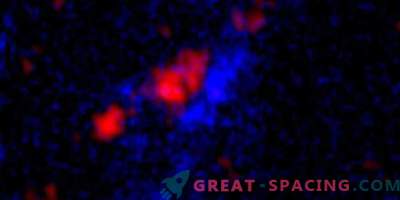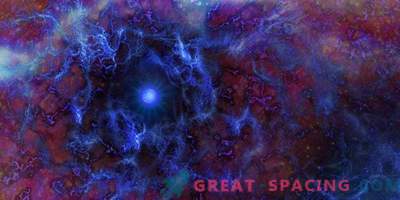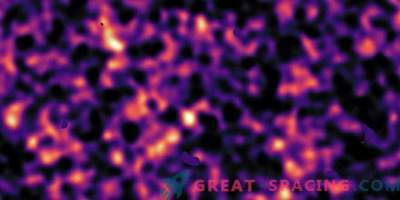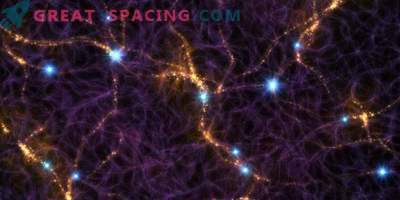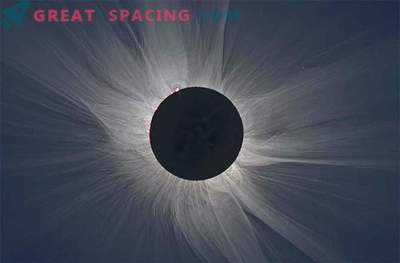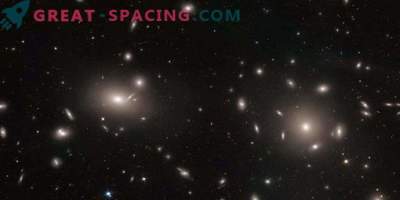
Astronomers using a powerful quasar to study a huge invisible curl filled with superheated gas report that they may have found the “missing” visible matter of the Universe.
All atoms in galaxies, stars and planets make up approximately 5% of the massive cosmic density. Approximately 70% is represented by dark energy — a mysterious repulsive force that forces space to expand with increasing speed. The remaining quarter consists of dark matter — an invisible material whose presence is felt due to the gravitational influence on galactic scales. Dark matter unites galaxies with massive curls, forming a cosmic web that serves as an invisible skeleton for the Universe.
Scientists have estimated these proportions by two methods. Many years ago, they calculated how much matter would have appeared after the Big Bang that created the Universe. Also studied the relic radiation - the most ancient light in space, penetrating the whole sky. It was possible to find approximately the same proportions of normal matter, dark matter and dark energy.
This small piece of normal matter, which we can detect, is called baryonic. It is the most famous number of three positions: it emits light (the Sun) or reflects it (the Moon), making the object visible through telescopes. But the secret remained. More than 20 years ago, it was noted that if we add all the starlight in galaxies, we get only 10% of these 5% of ordinary matter. Then where are the baryons, not collapsed into stars and galaxies? The researchers focused on this issue, adding all the hot diffuse gas in huge halos and even larger galactic clusters. Then the question arose: “Can a large amount of missing matter linger in the dark matter threads that make up the cosmic web?”.
The problem is that the missing substance will be mainly formed from hydrogen (the simplest element and the most common in space). When hydrogen atoms are ionized, they can become invisible for optical wavelengths, which makes detection difficult. If a cloud of ionized hydrogen is located between the Earth and a source of UV light, then hydrogen will absorb certain wavelengths, leaving a distinct chemical imprint.
The gas becomes increasingly hot (above a million degrees), after which the ionized hydrogen stops leaving a clear signal in the ultraviolet. Therefore, we also had to aim at much more rare oxygen ions and look for their X-ray prints. Scientists used the ESA XMM-Newton space telescope to study the quasar 1ES 1553 + 113. This is an active supermassive black hole in the galactic center. Quasars absorb matter and glow brightly in many wavelengths (from radio to x-rays). These sky beacons are able to trace material crossing the path of the beam. Studying the chemical imprint of oxygen in X-rays from quasi light, the researchers were able to find a huge amount of extremely hot intergalactic gas. The analysis showed that it can make up to 40% of baryonic matter in space. This may be enough to explain the missing matter. It is believed that these ions began in the stellar hearts that emerged from supernovae. They were thrown out of their native galaxies during such explosions. Perhaps they became overheated precisely because of shocks. Atoms must be in contact with each other in order to radiate energy. But individual atoms in a rarefied gas are located far from each other, therefore they could not touch, and remained red-hot.
There are alternative explanations. For example, an ionized gas signal could come from a galaxy, rather than an intergalactic gas. But the results are able to point out the places where the missing baryons are hidden. Next, you need to follow the other quasars.





